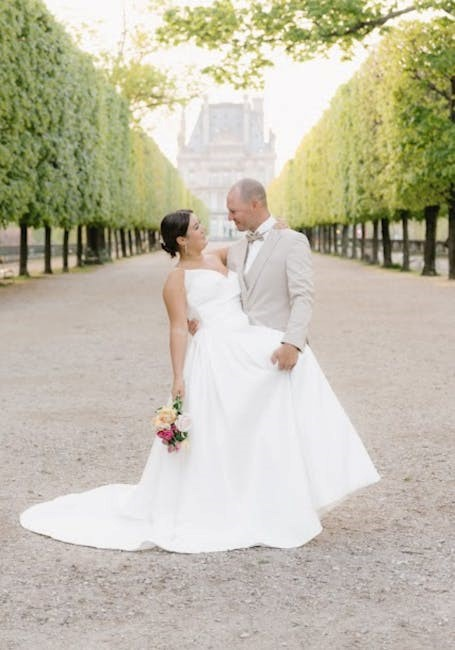The Fellowship of the Ring is the first volume of J.R.R. Tolkien’s epic trilogy, introducing Frodo Baggins’ perilous quest to destroy the One Ring and save Middle-earth.
Overview of the Book
The Fellowship of the Ring, published on July 29, 1954, is the first volume of J.R.R. Tolkien’s The Lord of the Rings. Initially released in 3,000 copies in the UK and 1,500 in the US, it introduces Middle-earth’s epic struggle against darkness. Tolkien envisioned it as a single book but was divided into three parts for publication. The story follows Frodo Baggins’ perilous journey to destroy the One Ring, joined by a diverse Fellowship. Its rich world-building and compelling narrative have made it a cornerstone of fantasy literature.
Historical Context and Publication Details
The Fellowship of the Ring was published on July 29, 1954, in the UK, with an initial print run of 3,000 copies, followed by 1,500 for the US edition. Tolkien originally envisioned it as part of a single volume but was divided into three for publication. Rooted in Tolkien’s earlier work, The Hobbit, the book emerged during the post-World War II era, gaining rapid popularity. Its success led to numerous translations and reprints, solidifying its place as a foundational work in fantasy literature.
Significance in Fantasy Literature
The Fellowship of the Ring holds a monumental place in fantasy literature, reshaping the genre with its intricate world-building, compelling characters, and epic scale. Tolkien’s work introduced Middle-earth, a fully realized realm with its own history, cultures, and languages, setting a new standard for immersive storytelling. Its exploration of universal themes, such as the struggle between good and evil, friendship, and sacrifice, has inspired countless authors, films, and games. As a foundational text, it remains a timeless classic, continuing to captivate readers and solidify its legacy in modern fantasy.

Storyline and Plot Development
The Fellowship of the Ring begins with Frodo inheriting the One Ring and learning of its peril; Guided by Gandalf, Frodo forms a diverse Fellowship to destroy the Ring in Mordor.
The Formation of the Fellowship
The Fellowship is formed in Rivendell, where representatives from various races unite to aid Frodo. Gandalf, the wise wizard, brings together elves, dwarves, humans, and hobbits to ensure the Ring’s destruction. Each member—Frodo, Sam, Aragorn, Legolas, Gimli, and Boromir—brings unique skills, fostering diversity and strength. Their bond is crucial as they embark on the treacherous journey, facing internal conflicts and external threats. This diverse group exemplifies unity against darkness, a central theme of the story.
Key Events in the First Volume
The Fellowship of the Ring begins with Frodo inheriting the One Ring and learning of its peril. Guided by Gandalf, Frodo flees the Shire, pursued by the Nazgûl. The Council of Elrond in Rivendell reveals the Ring’s history and the need for its destruction. The Fellowship forms and embarks on a perilous journey, facing challenges like the treacherous Mines of Moria, where Gandalf confronts the Balrog. The volume concludes with the Fellowship’s dissolution after Boromir’s betrayal and the Uruk-hai attack, setting the stage for the next volume.
The Journey to Mordor
Frodo and Sam undertake a perilous journey to Mordor, determined to destroy the One Ring in Mount Doom. Guided by Gollum, they navigate treacherous landscapes, avoiding Sauron’s forces. The journey tests their resolve, as they face inner turmoil and external threats. Gollum’s conflicted loyalty adds tension, while Frodo’s burden grows heavier. The journey highlights the enduring friendship and sacrifice required to save Middle-earth, showcasing the resilience of ordinary beings in the face of overwhelming odds.
The Role of the One Ring
The One Ring, forged by Sauron, is the source of his power to control Middle-earth. It corrupts its bearers, enslaving them to Sauron’s will. Frodo’s quest to destroy it in Mount Doom is the only way to prevent Sauron’s domination. The Ring’s seductive power and corrupting influence drive the story’s conflict, making it a central symbol of the struggle between good and evil. Its destruction is essential to restore peace and freedom to Middle-earth, emphasizing the burden Frodo carries as its bearer.

Major Characters and Their Roles
Frodo Baggins, the reluctant hero, bears the One Ring’s burden. Samwise Gamgee embodies loyalty, while Gandalf the Grey guides the quest. Aragorn emerges as a leader, and Legolas, Gimli, and Boromir represent the Fellowship’s diverse strengths and struggles.
Frodo Baggins: The Reluctant Hero
Frodo Baggins, a humble hobbit, inherits the One Ring from Bilbo, thrusting him into a perilous quest to destroy it. Reluctant yet resilient, Frodo bears the Ring’s burden, embodying courage and selflessness. Guided by Gandalf and supported by loyal Sam, Frodo navigates treacherous landscapes, facing internal and external struggles. His journey transforms him from a simple hobbit to a hero, illustrating the power of ordinary individuals in extraordinary circumstances. Frodo’s resolve and sacrifice define his role as the reluctant hero of Middle-earth’s fate.
Samwise Gamgee: Loyalty and Courage
Samwise Gamgee, Frodo’s loyal servant and closest friend, embodies unwavering loyalty and quiet courage; Despite his humble origins, Sam insists on accompanying Frodo on his perilous journey, showcasing his devotion. His bravery shines through as he faces numerous perils, often risking his own life to protect Frodo. Sam’s simple wisdom and steadfast resolve provide emotional and moral support, making him an indispensable companion. His loyalty and courage highlight the strength of ordinary individuals in extraordinary circumstances, cementing his role as a beloved and vital character in the story.
Gandalf the Grey: The Wise Guide
Gandalf the Grey is a powerful wizard who plays a pivotal role in the quest to destroy the One Ring. His wisdom and foresight guide Frodo and the Fellowship, ensuring their mission remains on course. Gandalf’s transformation from a cantankerous conjurer in The Hobbit to a mighty adversary of Sauron underscores his growth and significance. His leadership in organizing the Fellowship and his critical interventions highlight his importance. Gandalf’s wisdom and strength embody the hope of Middle-earth, making him an indispensable figure in the struggle against darkness.
Aragorn: The Emerging Leader
Aragorn, initially introduced as the mysterious Ranger Strider, gradually reveals his noble lineage and emerges as a key leader in the Fellowship. His knowledge of Middle-earth and combat skills prove invaluable. Aragorn’s humility and sense of duty drive his reluctance to claim his rightful throne, yet he steps forward to guide the Fellowship when needed. His leadership qualities become evident as he navigates perilous landscapes and makes crucial decisions. Aragorn’s journey symbolizes the rise of a reluctant hero destined to unite and save Middle-earth.
Legolas, Gimli, and Boromir: The Fellowship’s Diversity
Legolas, Gimli, and Boromir represent the rich diversity of Middle-earth’s cultures within the Fellowship. Legolas, the swift and agile elf archer, brings unparalleled accuracy and grace. Gimli, the sturdy dwarf warrior, contributes unwavering courage and strength in combat. Boromir, the valiant human from Gondor, offers military prowess and a deep loyalty to his homeland. Together, they embody the unity of disparate races against a common threat, showcasing how their differences strengthen the quest. Their interactions highlight the challenges and bonds forged in their shared journey.

Themes and Symbolism
The Lord of the Rings: The Fellowship of the Ring explores themes of friendship, sacrifice, and the struggle between good and evil, symbolized by the One Ring’s power and corruption.
The Struggle Between Good and Evil
The central theme of The Fellowship of the Ring revolves around the eternal conflict between good and evil. The One Ring, forged by Sauron, embodies absolute power and corruption, threatening Middle-earth’s freedom. Frodo’s perilous journey to destroy the Ring symbolizes the fight against darkness, while characters like Gandalf, Aragorn, and the Fellowship represent the forces of good. The Ringwraiths and Sauron’s armies exemplify evil’s relentless pursuit of domination. This struggle is not only external but also internal, as characters like Boromir grapple with temptation, highlighting the universal battle between morality and desire. The novel underscores the resilience of hope and unity in the face of overwhelming darkness, making it a timeless allegory for the human condition.
Importance of Friendship and Loyalty
Friendship and loyalty are cornerstone themes in The Fellowship of the Ring. Frodo’s bond with Sam exemplifies unwavering loyalty, as Sam accompanies Frodo despite perilous challenges. The Fellowship itself, a diverse group united by a common purpose, underscores the strength of camaraderie. Characters like Merry and Pippin demonstrate loyalty to Frodo, while Aragorn’s leadership highlights trust and unity. These relationships not only sustain the characters but also drive the quest’s success, showing how bonds of friendship and loyalty overcome even the darkest adversities in Middle-earth.
The Burden of Responsibility
Frodo’s reluctant acceptance of the One Ring embodies the weight of responsibility, as he shoulders the fate of Middle-earth. The Ring’s power forces him to prioritize the greater good over personal comfort, showcasing his moral courage. Sam’s unwavering loyalty further highlights the shared burden, as he voluntarily bears the hardships alongside Frodo. This theme extends to other characters, like Aragorn and Gandalf, who carry the responsibility of guiding and protecting the Fellowship. The burden of responsibility drives the narrative, emphasizing sacrifice and duty in the face of overwhelming odds.

The Power of Sacrifice
The narrative underscores the transformative power of sacrifice, as characters repeatedly surrender their desires, safety, and even lives for the greater good. Frodo’s resolve to destroy the Ring, despite its personal cost, exemplifies this theme. Gandalf’s willingness to confront the Balrog, Boromir’s ultimate redemption, and Sam’s steadfast loyalty all illustrate how sacrifice propels the story forward. These acts of selflessness not only define the characters but also highlight the moral depth of their quest, making sacrifice a cornerstone of the story’s emotional and ethical fabric.

Editions and Adaptations
The Fellowship of the Ring has been published in various editions, including hardcover, paperback, and special anniversary editions, with striking cover designs. The book has also inspired successful movie adaptations by Peter Jackson, further cementing its place in popular culture and introducing the story to new generations of fans worldwide.
Original Publication and Reprints
The Fellowship of the Ring was first published on July 29, 1954, in the United Kingdom by Allen & Unwin, with 3,000 copies printed for the UK and 1,500 for the U.S. The book was initially intended as one volume but was divided into three due to publishing constraints. Over the years, numerous reprints and editions have been released, including a mass market paperback in 1986 and a hardcover edition in 2022. These reprints have maintained the book’s timeless appeal, with formats like the 480-page edition on Amazon remaining popular among readers worldwide.
Modern Editions and Covers
The Fellowship of the Ring is available in various modern editions, including hardcover, paperback, and Kindle formats. A striking black cover, inspired by Tolkien’s design, graces the 2022 hardcover edition. The Kindle version offers a convenient reading experience, with features like adjustable fonts and highlights. Special editions, such as the 2022 hardcover, include detailed maps of Middle-earth, enhancing the reader’s immersion. These modern releases ensure Tolkien’s classic remains accessible and visually appealing to new generations of readers, preserving its timeless allure.

Movie Adaptations and Their Impact
Peter Jackson’s film trilogy, beginning with The Fellowship of the Ring (2001), brought Middle-earth to life, captivating global audiences. The movies introduced Tolkien’s work to new generations, blending stunning visuals with faithful storytelling. Elijah Wood (Frodo) and Viggo Mortensen (Aragorn) became household names. The films not only earned critical acclaim but also expanded the book’s cultural impact, inspiring countless fans and solidifying its place in cinematic history. Their success paved the way for The Hobbit trilogy and other fantasy adaptations, leaving a lasting legacy.

World-Building and Middle-earth
Middle-earth, J.R.R. Tolkien’s fictional universe, is a richly detailed world with diverse geography and history. It features various races like hobbits, elves, dwarves, each with unique cultures.
Geography and Regions
Middle-earth’s diverse geography spans vast plains, enchanted forests, and treacherous mountain ranges. The Shire, home to hobbits, contrasts with Mordor’s volcanic landscapes. Regions like Gondor, Rohan, and Lothlórien each have distinct climates and inhabitants, shaping the Fellowship’s adventures. The detailed mapping of rivers, forests, and cities creates a believable world, rich in history and lore. This intricate design immerses readers in Tolkien’s vision, making Middle-earth a character in its own right.
Cultures and Races
Middle-earth is home to diverse cultures and races, each with unique traditions and roles. Hobbits, living in the Shire, embody simplicity and resilience. Elves, ancient and wise, inhabit realms like Lothlórien, while dwarves, master craftsmen, dwell in Khazad-dûm. Men, divided into kingdoms like Gondor and Rohan, hold significant power. Ents, guardians of forests, and orcs, dark servants of Sauron, add depth to the world. These races, with their distinct identities, shape the epic tapestry of Middle-earth, enriching its lore and conflicts.

History and Lore
Middle-earth’s history is shaped by ancient struggles between light and darkness. The Valar forged the world, while Elves and Men fought against Morgoth. Sauron, a dark lord, created the Rings of Power, including the One Ring, to control all. Gandalf’s discovery of the Ring’s return sets the stage for Frodo’s quest. The Shire’s tranquility contrasts with the looming threat, while the Council of Elrond unites disparate races against Sauron’s evil. This rich lore forms the foundation of Tolkien’s epic tale, immersing readers in a world of legend and peril.

Critical Reception and Legacy
The Fellowship of the Ring has received widespread acclaim, with a 4.8-star rating on Amazon and over 26,000 reviews, solidifying its status as a timeless fantasy classic.
Reviews and Ratings
The Fellowship of the Ring has garnered widespread acclaim, with a 4.8-star rating on Amazon from over 26,000 reviews. Readers praise its intricate world-building, deep character development, and timeless themes. Many highlight the book’s ability to balance adventure with emotional depth, making it a beloved classic. Critics and fans alike commend Tolkien’s unique writing style, which immerses readers in Middle-earth. While some note the slow pacing in early chapters, the majority agree that the novel’s richness and complexity make it a must-read in fantasy literature, ensuring its enduring popularity across generations.
Awards and Recognition
The Fellowship of the Ring has been nominated as one of America’s best-loved novels by PBS’s The Great American Read. Widely regarded as a cornerstone of fantasy literature, it has earned critical acclaim and numerous accolades. The book’s enduring popularity has solidified its place as a classic, influencing countless works in the genre. Its success contributed to the trilogy being named one of the most successful novels in publishing history, further cementing Tolkien’s legacy as a master storyteller and world-builder.
Influence on Modern Fantasy
The Fellowship of the Ring has profoundly shaped modern fantasy, inspiring authors, games, and adaptations. Its detailed world-building and complex characters set a new standard for the genre. The novel’s success paved the way for epic fantasy series, influencing writers like George R.R. Martin and Patrick Rothfuss. Its themes of camaraderie and sacrifice remain timeless, while its richly crafted Middle-earth has become a benchmark for immersive storytelling. The book’s legacy continues to resonate, solidifying its role as a foundational work in fantasy literature and popular culture.
The Fellowship of the Ring remains a timeless tale of courage, friendship, and sacrifice, with its enduring appeal ensuring its place as a cornerstone of fantasy literature and culture.
Final Thoughts on the Fellowship’s Journey
The Fellowship’s journey is a testament to unity and resolve, as diverse characters navigate perilous landscapes, forging unbreakable bonds. Their quest, driven by sacrifice and loyalty, exemplifies the power of collective effort against overwhelming odds. Frodo’s burden, supported by his companions, underscores the idea that even the smallest among us can shape destiny. The Fellowship’s dissolution marks a poignant turning point, yet their shared experiences remain central to the narrative, leaving a lasting impact on Middle-earth and readers alike.
The Enduring Appeal of the Book
The Lord of the Rings: The Fellowship of the Ring remains a timeless classic, captivating readers with its richly detailed world-building, memorable characters, and universal themes. The struggle between good and evil, the power of friendship, and the burden of responsibility resonate deeply. Tolkien’s meticulous craftsmanship and the depth of Middle-earth’s lore ensure the book’s enduring relevance. Its influence on modern fantasy is unparalleled, making it a cherished read for generations, while its exploration of sacrifice and courage continues to inspire and captivate audiences worldwide.